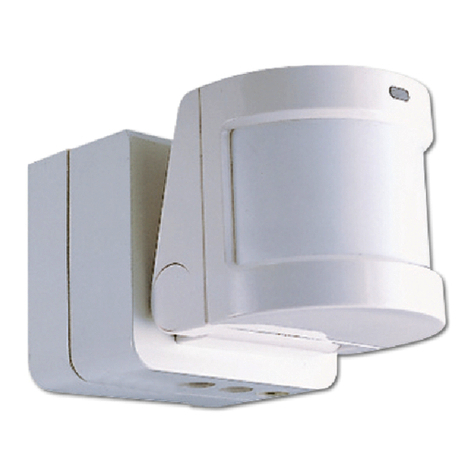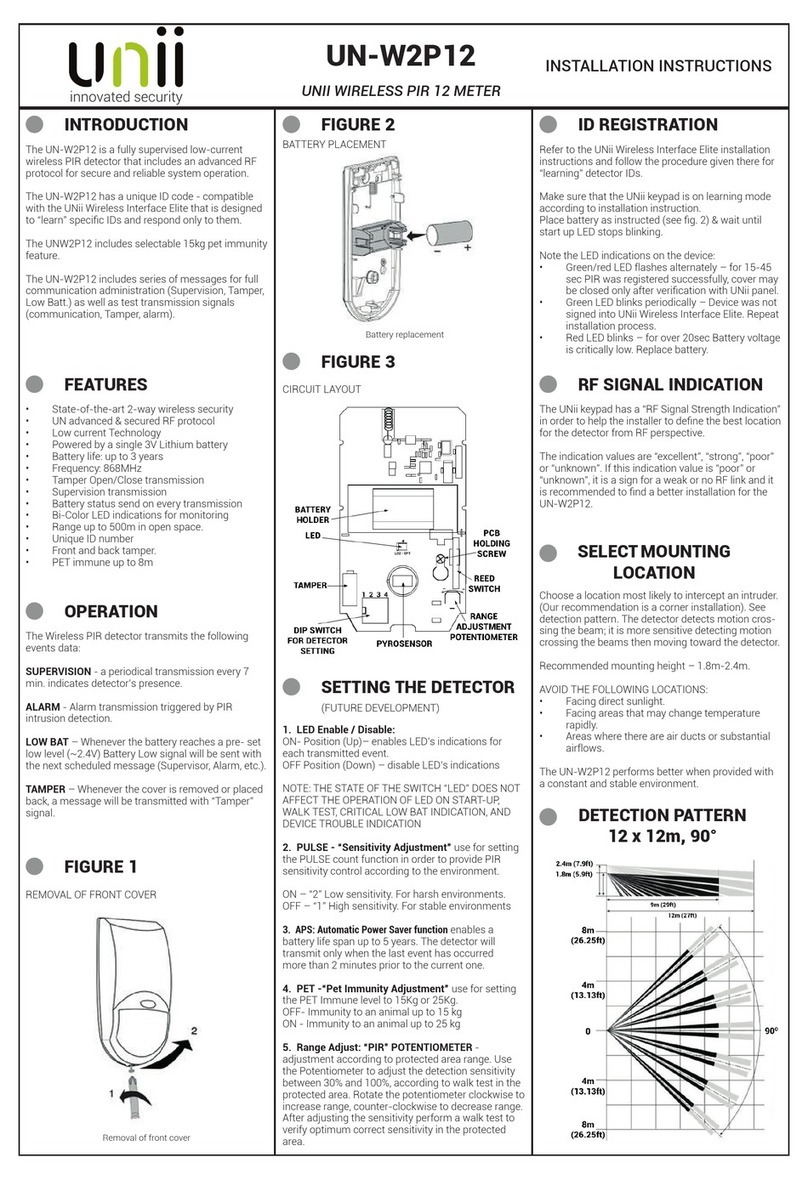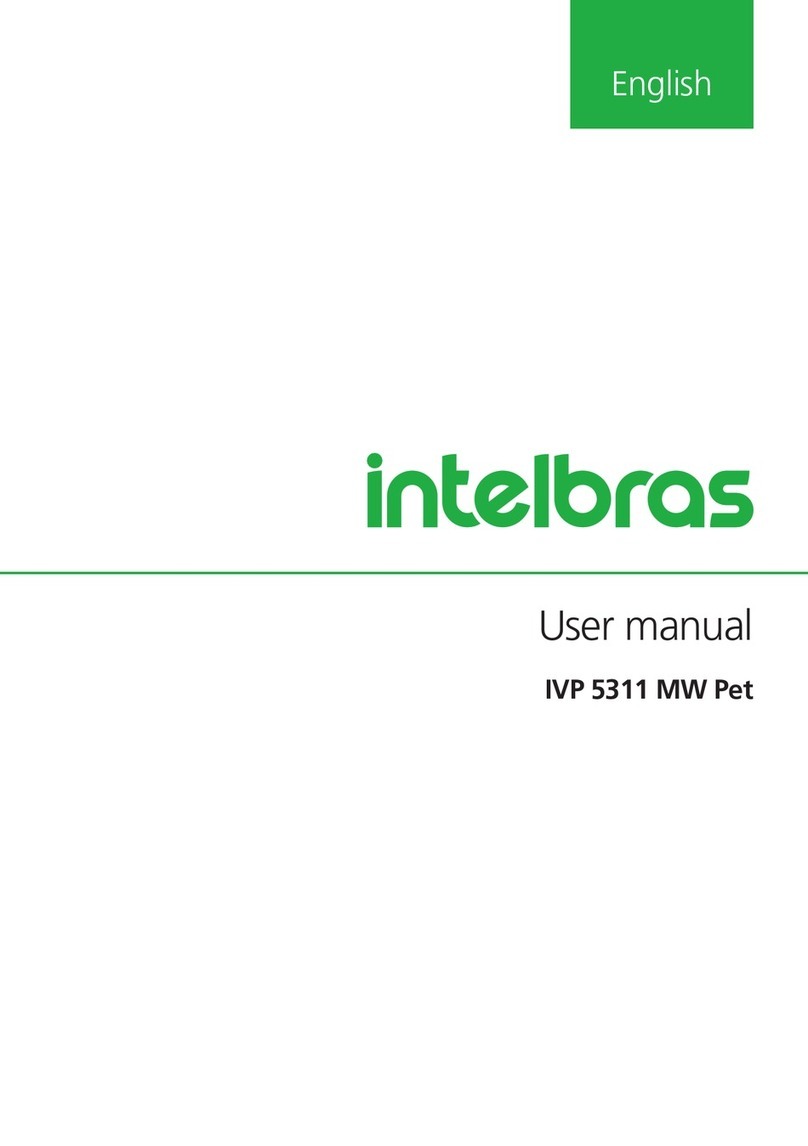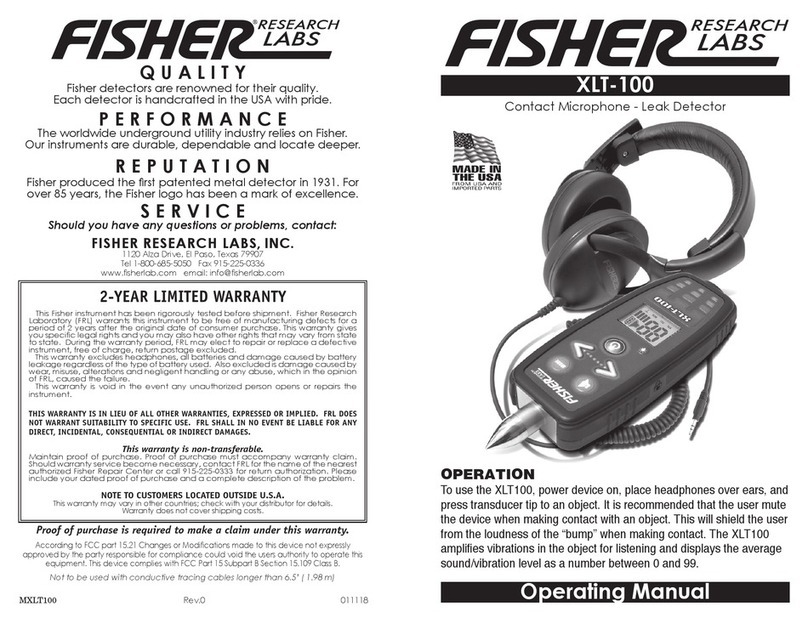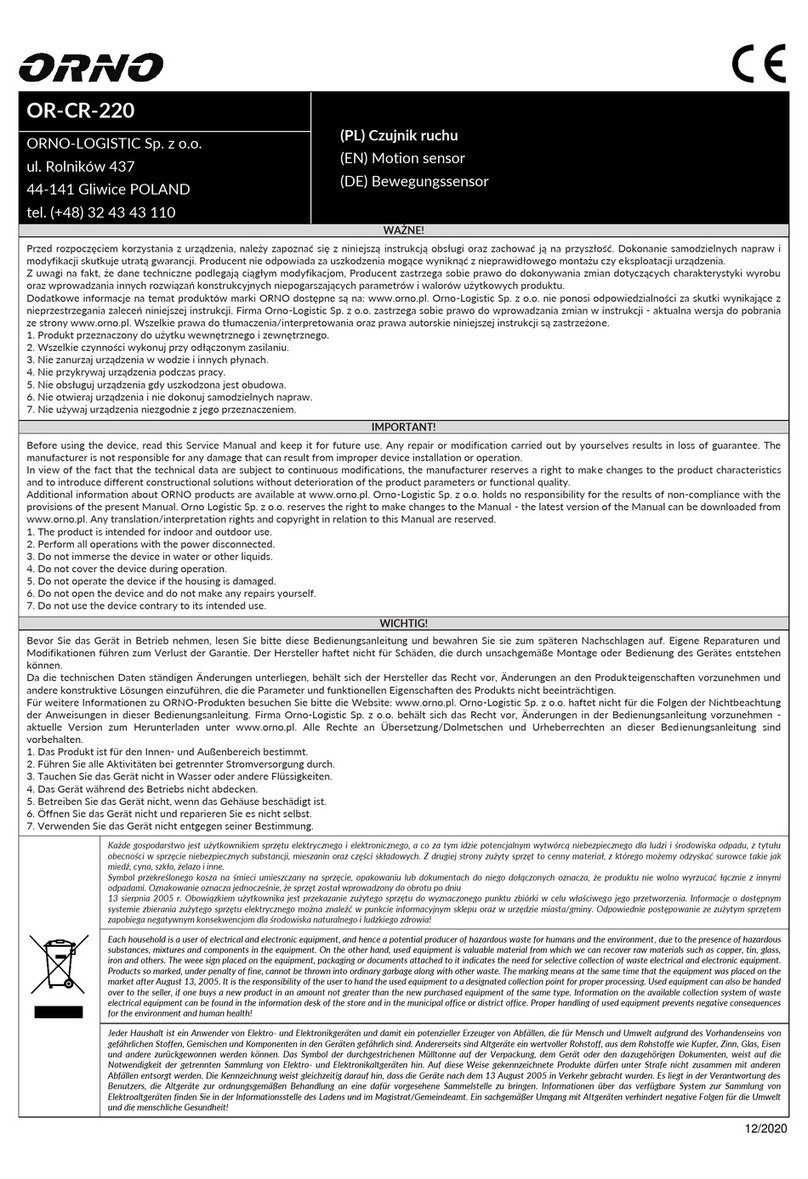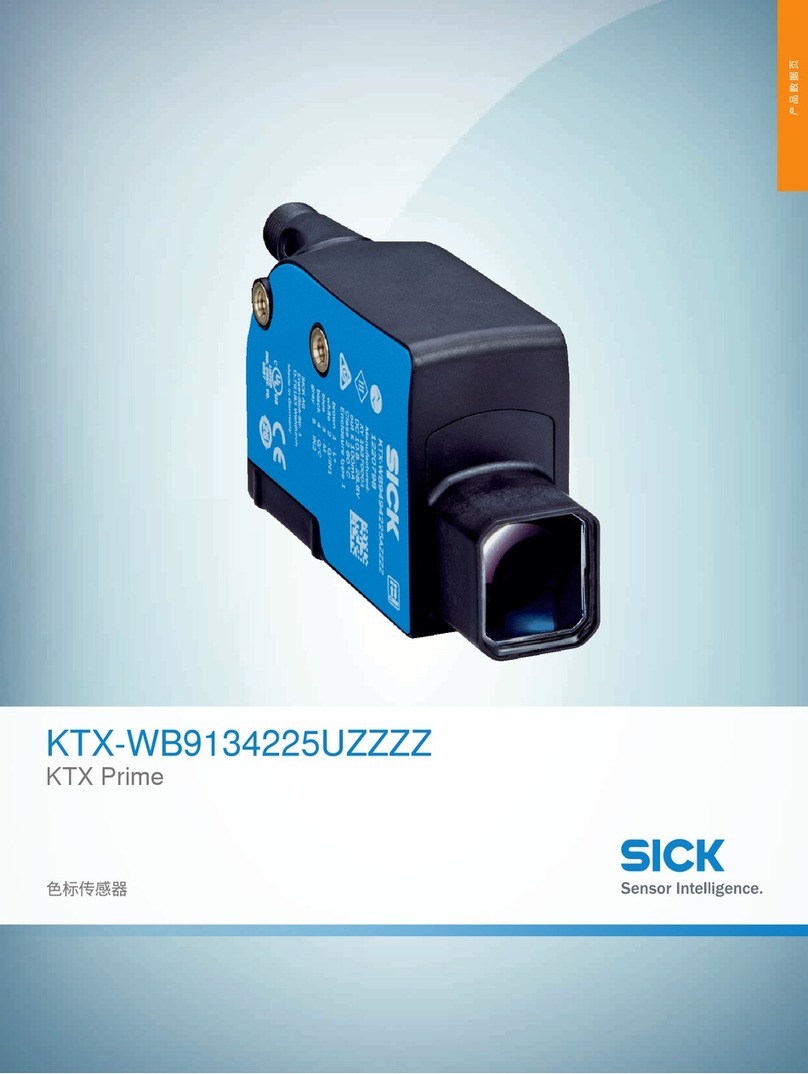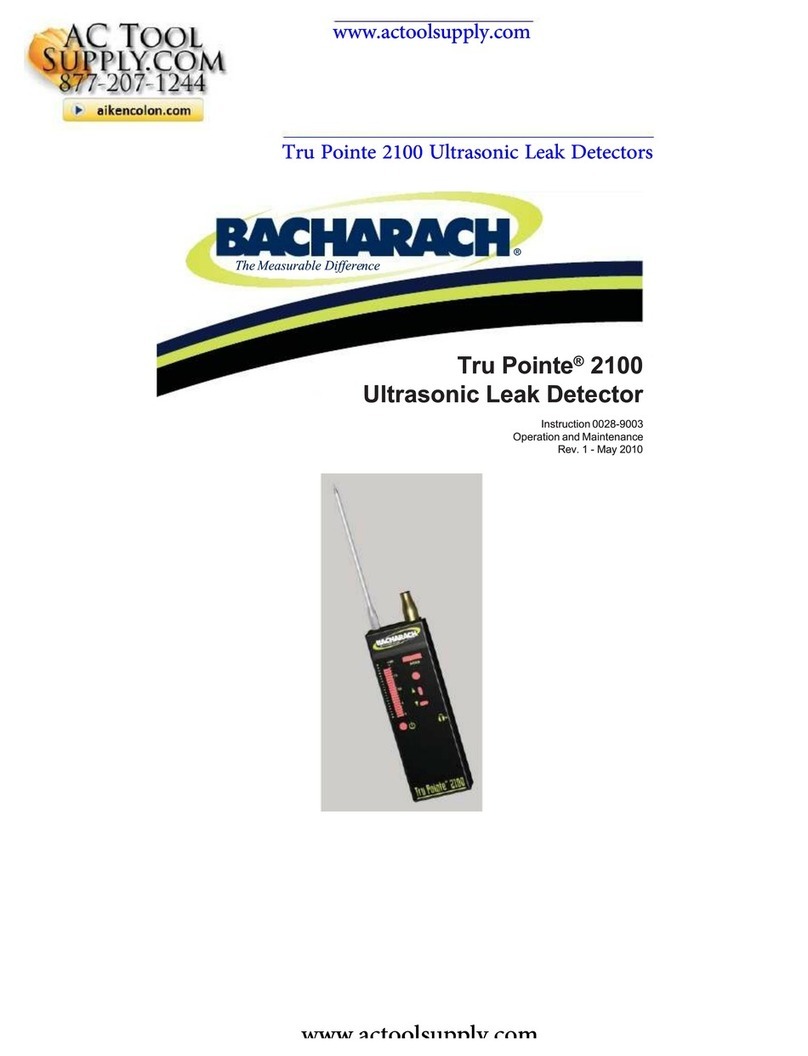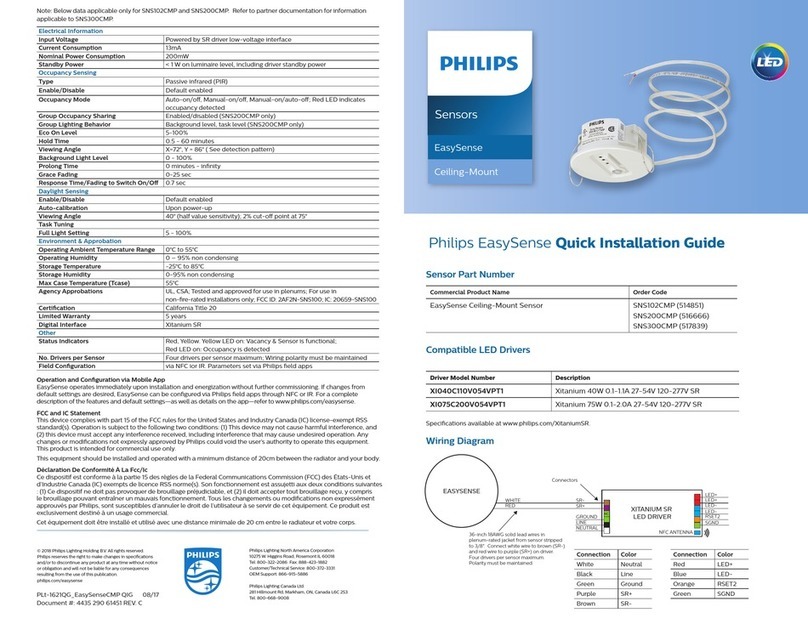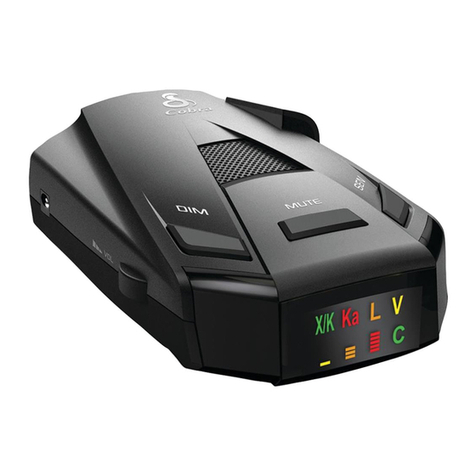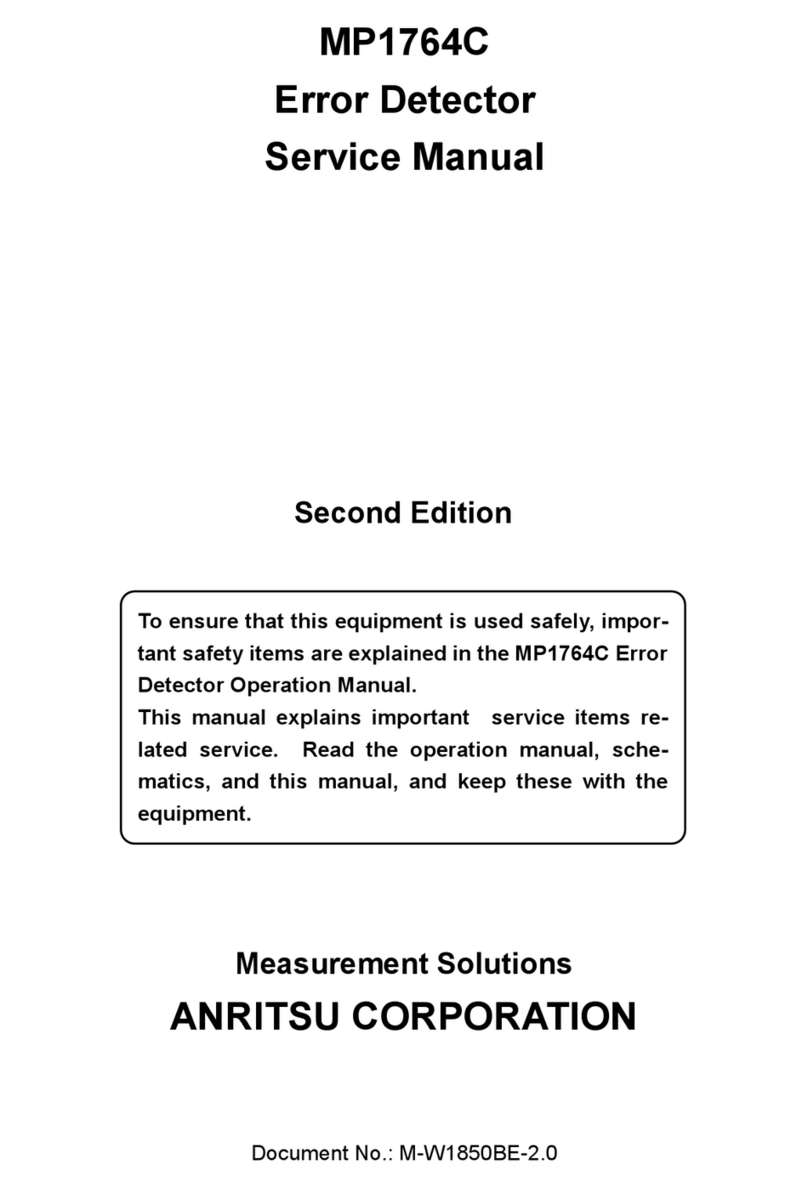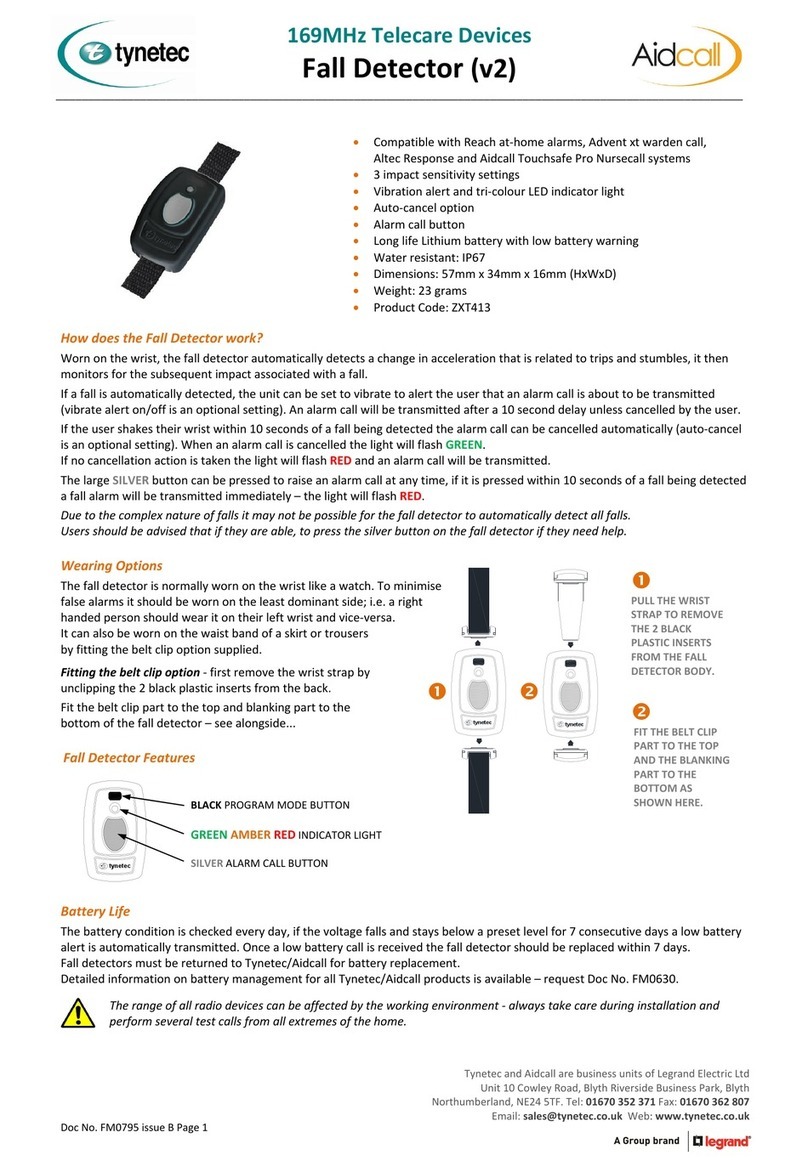Erone S10 User manual

FOTOCELLULE INFRAROSSO S10
Presentazione
Le fotocellule all’infrarosso ERONE mod. S2410 ( Fig.1) costituiscono un dispositivo di sicurezza
destinato alla protezione di beni e persone in sistemi di apertura automatica. Il sistema è composto da
una coppia di dispositivi all'infrarosso TX ed RX ad ottica fissa operanti alla lunghezza d'onda di 880
nm. La portata nominale è di 10 metri, in tutte le condizioni di visibilità ( pioggia, nebbia, polvere ).
Le ridotte dimensioni d'ingombro ne permettono la semplicità d'installazione su ogni tipo di struttura.
Caratteristiche tecniche
Emissione infrarossi con diodo:.....................................................GaAlAs
Modulazione continua: ................................................................1,5 KHz
Lunghezza d’onda di emissione: ...................................................880 nm
Alimentazione: ............................................................................12 - 24 Vac/dc
Consumo in 12 Vac/dc
- ricevitore: .............................................................................34 mA
- trasmettitore:.........................................................................45 mA
Consumo in 24 Vac/dc
- ricevitore: .............................................................................34 mA
- trasmettitore:.........................................................................42 mA
Doppio relé con scambi in serie:...................................................SI
Contatto di uscita:.......................................................................1 NC / 1 NO
Potere di interruzione corrente continua:........................................24 W / 48 V
Potere di interruzzione corrente alternata: ......................................60 VA / 48 V
Temperatura di funzionamento:.....................................................-10°C /+55°C
Test point per la centratura.
Guarnizione per l'appoggio a parete in gomma termoplastica
Protezione del contenitore: ...........................................................IP55
Portata nominale in tutte le condizioni:..........................................10 m
Dimensioni (mm):........................................................................90 x 60 x 22
Conformità: ...............................................................................UNI8612
Marcatura:..................................................................................CE
Contenuto della confezione
Guarnizioni:...............................................2
Trasmettitore:..............................................1
Ricevitore:..................................................1
Viti fissaggio fotocellula:..............................8
Viti fissaggio coperchio: ..............................4
Tasselli plastici Ø5:.....................................8
Dima di foratura:........................................1
INFRARED PHOTOCELLS S10 S10LICHTSCHRANKE
Introduction
The infrared photocells ERONE mod. S2410 ( Fig. 1) are a security device designed to the protection of areas
in which are operating automatic closing systems.
The product is composed by a couple of fixed optic infrared devices TX and RX, operating at 880 nm
wavelength.The rated range is 10 mt under all whether conditions ( rain, fog, dust ).
The reduced dimensions allow an easy installation procedure on any type of structure.
Technical specifications
Infrared emission with diode: ........................................................GaAlAs
Continuous modulation:...............................................................1,5 KHz
Wavelength emission: ..................................................................880 nm
Power supply:..............................................................................12 - 24 Vac/dc
Current consumption at 12 Vac/dc
- receiver: ...............................................................................34 mA
- transmitter:............................................................................45 mA
Current consumption at 24 Vac/dc
- receiver: ...............................................................................34 mA
- transmitter:............................................................................42 mA
Double contact relay with serial exchange:.....................................yes
Output contacts:..........................................................................1 NO / 1 NC
Max DC power on the relay contacts:............................................24 W / 48 V
Max AC power on the relay contacts: ............................................60 VA / 48 V
Operating temperature: ...............................................................-10°C /+55°C
Best alignment test point.
Base plate in thermoplastic rubber.
IP Grade:....................................................................................IP55
Rated range in all conditions: .......................................................10 m
Dimensions (mm):........................................................................98 x 60 x 22
Conformity according to:..............................................................UNI8612
Marking:.....................................................................................CE
Beschreibung
Die Infrarotlichtschranken ERONE Typ S2410 ( Bild. 1) sind Geräte, um die Sicherheit von Gütern und Leuten im
Betrieb von automatischen Schliessungssystemen zu schützen.
Das System bestehet aus einem Paar von Infrarotvorrichtungen TX und
RX mit fester Optik, die bei einer Wellenlänge von 880 nm arbeiten. Die Nennreichweite ist gleich 10 Metern
in allen Sichtverhältnissen (Regen, Nebel, Staub).
Technische eigenschaften
Infrarotausstrahlung mit Diode:.....................................................GaAlAs
Dauermodulation:.... ...................................................................1.5 KHz
Wellenlänge der Ausstrahlung: ....................................................880 nm
Stromversorgung:.... ....................................................................12-24 V Ws/Gs
Stromverbrauch bei ....................................................................12 V Ws/Gs
-Empfänger:................................................................................34 mA
-Sender: .....................................................................................45 mA
Stromverbrauch bei ....................................................................24 V Ws/Gs
-Empfänger:................................................................................34 mA
-Sender: .....................................................................................42 mA
Doppelrelais mit Austausch in Serie:..............................................Ya
Ausgangskontakt:........................................................................1 NC 1 NO
Abschaltleistung bei Gleichstrom: .................................................24 W / 48 V
Abschaltleistung bei Wechselstrom:...............................................60 VA / 48 V
Betriebstemperatur: .....................................................................-20 °C / +55 °C
Gehäusesschutzgrad:...................................................................IP55
Nennreichweite unter allen Bedingungen:......................................10 Meter
Abmessungen .............................................................................90 x 60 x 22 mm
Entsprechend: .............................................................................Vorschrift UNI8612
Zertifikat:............................................. .......................................CE
Installation
1-Die Position der Befestigungs-Löcher mit der gelieferten Schablone (Bild 2) bestimmen;
2-Die Befestigungs-Löcher (Bild 3) machen;
3-Die Einsatzstücke (Bild 4) positionieren;
4-Die Dichtung und die elektronische Leiterplatte der Lichtschranke (Bild 5) zusammenbauen;
5-Durch die gelieferte Schrauben die Lichtschranke befestigen (Bild 6);
6-Wenn die elektrischen Verbindungen (Bild 8 und 9)
und die Einstellungen (Bild 7 und 10) ausgeführt wurden, durch die gelieferte Schrauben das Glas befestigen.
Den Ausgangs-Kontakt (Bild 8) verbinden:
-Kontakt NC: Klemmen C-NF (Kontakt normalerweise geschlossen)
-Kontakt NO: Klemmen C-NO (Kontakt normalerweise geoffnet)
Einstellung
- Verbrauch 12 Vac/dc : Klemmen 0 - 12.
- Verbrauch 24 Vac/dc : Klemmen 0 - 24.
Empfohlner Kabelquerschnitt:
2
-Sendzelle 2 x 0,6 mm
2
-Empfangszelle 2 x 0,6 mm .
Ausrichtung
Den Sender derart mit dem Empfänger ausrichten dass ein Strahlenbündel gebildet wird.
Die rote Led LR wird gelöscht (Bild. 12).
Empfindlichkeitseinstellung
Wenn der Abstand zwischen dem Sender und dem Empfänger unter 5 Metern liegt, die Brücke entfernen (Bild.
13 ). Die Empfindlichkeit am Potentiometer P1 einstellen ( Bild. 10).
Bei der optimalen Einstellung Beträgt die Spannung zwischen den klemmen T un P 1 Vdc ( mit einem
Voltmeter zu messen - Bild. 11 ).
LED Zustande
Am Sender
- Die grüne Led schaltet sich ein, wenn der Sender stromversorgt wird.
Am Empfänger
- Die grüne Led schaltet sich ein, wenn der Empfänger stromversorgt wird (Bild. 12).
- Die rote Led schaltet sich ein, wenn Sender und Empfänger nicht korrekt ausgerichtet sind (Bild. 12).
BENENNUNG M
Dichtung:...........................................
Sender:..............................................
Empfänger:........................................
Glas:.................................................2
Gläser-Befestingugsschraub: ...............4
Befestingug schrauben
ENGE
2
1
1
:.......................8
Einsatz kunstoff Ø5:............................8
Bohrung shilfe:...................................1
Installazione
1 - Individuare la posizione dei 4 fori di fissaggio per mezzo della dima di foratura presente nella
confezione (Fig. 2);
2 - Praticare i fori per il fissaggio della base. (Diam del foro: 5 mm) (Fig. 3);
4 - Posizionare i 4 tasselli in plastica in dotazione (Fig. 4);
5 - Assemblare la guarnizione e la fotocellula ( Fig. 5);
6 - Fissare la cellula per mezzo delle 4 viti in dotazione (Fig. 6);
7 - Verificare l’allineamento delle ottiche (Fig. 6);
8 - Eseguire i collegamenti elettrici ed alimentare ricevitore ( Fig. 8) e trasmettitore ( Fig. 9);
- alim. 12 Vac/dc : Morsetti 0 - 12
- alim. 24 Vac/dc : Morsetti 0 - 24.
9 - Dopo aver eseguito le regolazioni ( Fig. 10) fissare il coperchio per mezzo delle 2 viti in
dotazione.
Sezione di cavo raccomandata:
2
-Cellula trasmittente 2 x 0,6 mm
2
-Cellula ricevente 4 x 0,6 mm .
Collegare il contatto di uscita ai morsetti C ed NO per un contatto normalmente aperto oppure C ed
NC per un contatto normalmente chiuso ( Fig. 8 ).
Allineamento
Allineare il trasmettitore ed il ricevitore in modo che venga creato il fascio ed il led rosso LR si spenga
( Fig. 7 - Fig. 12).
Regolazione della sensibilità
Se la distanza tra il trasmettitore ed il ricevitore è inferiore a 5 metri, togliere il ponticello sul
trasmettitore ( Fig. 13 ). Regolare la sensibilità azionando il potenziometro sul ricevitore ( Fig. 10).
La regolazione ottimale si ottiene quando viene rilevata una tensione di 1 Vdc tra i morsetti T e P
( tensione misurata con un voltmetro - Fig. 11 ).
Sul Trasmettitore
- Il led verde si accende quando il trasmettitore viene alimentato.
Sul ricevitore
- il led verde si accende quando il ricevitore viene alimentato ( Fig. 12 );
- il led rosso è acceso quando ricevitore e trasmettitore non sono allineati (Fig. 12).
Packing list
Seals..........................................................2
Transmitter .................................................1
Receiver:....................................................1
Plastic covers:.............................................2
Photocell fixing screws:................................8
Cover fixing screws: ....................................4
Plastic plugs Ø5: ........................................8
Drilling template: ........................................1
Installation phases
1 - Mark the location of the fixing holes using the drilling template supplied with the photocells (Fig. 2);
2 - Drill the 4 fixing holes for base . (Hole diam: 5mm) (Fig. 3);
3 - Locate the 4 plastic plugs provided (Fig. 4);
4 - Assemble the seal and the photocells (Fig. 5);
5 - Mount the photocell with the screws supplied (Fig. 6);
6 - Make the electrical connections, power the receiver ( Fig. 8) and the transmitter ( Fig. 9);
- 12 Vac/dc : terminals 0 - 12;
- 24 Vac/dc : terminals 0 - 24.
7 - After the adjustment ( Fig. 10), fit the cover using the screws supplied (Fig. 14)
Recommended cable cross-section:
2
- transmitter photocells 2 x 0,6 mm
2
- receiver photocells 4 x 0,6 mm
Connect the output contact to the terminals C eand NO for a normally open contact or C and NC for a
normally closed contact ( Fig. 7 ).
Adjustment
Alignment
Align the transmitter and the receiver so that the beam is established and the red led (LR) goes off ( Fig. 7
and Fig. 12 ).
Sensitivity adjustment
If the distance between the transmitter and the receiver is less than 5 metres remove the bridge on the
transmitter ( Fig. 13 ).
Adjust the sensitivity with the trimmer on the receiver ( Fig. 10 ).
The optimum detection is obtained when a voltage of 1 Vdc is read across terminals T and P ( read the
voltage with a voltmeter - Fig. 11).
LED States
On the transmitter
The green led is ON when the transmitter is powered.
On the receiver
- The green led is ON when the receiver is powered ( Fig. 12 );
- The red led is ON when the beam is not established (Fig. 12).
Empfehlung
Bei Installation von 2 Reihen von Lichtschranken,
die Sender-Zellen mit den Empfänger-Zellen
kreuzen mit einer Entfernung von 60 Zentimetern
zwischen die zwei Paare, um einen Durchgang von
5 Metern zu erlauben.
Consiglio
In caso di installazione di 2 serie di
fotocellule, incrociare le cellule emittenti
con le cellule riceventi osservando una
distanza di 60 centimetri tra le due
coppie per permettere un passaggio di
5metri.
Advice
When two sets of photocells are installed,
cross the transmitter photocells with the
receiver photocells and keep a distance of
60 centimetres between the sets, for a 5
metres passage.

CELLULES INFRAROUGE S10
Introduction
Les cellules infrarouges ERONE mod. S2410 ( Fig. 1) sont destiné à assurer la sécurité des biens et des
personnes lors du fonctionnement des systèmes de fermeture automatique.
Le système est composé par une cellule émettrice et une cellule réceptrice à infrarouge, qui travail à la
longueur d'onde de 880 nm. La porté nominal est de 10 mt, dans n'import quel condition.
( pluie, brouillard,poussière ).
Composition..............................Q.té
Joint d'étanchéité:...........................2
Cellule émettrice (3 bornes:)............1
Cellule réceptrice (8bornes):............1
Capot: ..........................................2
Vis de fixation capot: ......................4
Vis de fixation cellule: .....................8
Cheville:........................................8
Caracteristiques techniques
Emission infrarouge avec diode:....................................................GaAlAs
Modulation continue:...................................................................1,5 KHz
Longueur d'onde de l'émission: .....................................................880 nm
Alimentation:...............................................................................12 - 24 Vac/dc
Consommation en 12 Vac/dc
-le récepteur:...........................................................................34 mA
-l' émetteur:.............................................................................45 mA
Consommation en 24 Vac/dc
-le récepteur:...........................................................................34 mA
-l'émetteur:..............................................................................42 mA
Double relayage:.........................................................................oui
Contact de sortie: ........................................................................1 NF 1 NO
Pouvoir de coupure en courant continu:.........................................24W / 48V
Pouvoir de coupure en courant alternatif:.......................................60 VA / 48 V
Température de fonctionnement:...................................................-10°C /+55°C
Protection:...................................................................................IP55
Portée:........................................................................................10 m
Encombrement (mm):...................................................................90 x 60 x 22
Conformité: ................................................................................UNI8612
Marcature: ..................................................................................CE
Installation
!
1 - Repérer l'emplacement des trous de fixation à l'aide du gabarit de perçage fourni avec les cellules
(fig. 2);
2 - Percer les trous de fixation (fig. 3);
3 - Mettre les chevilles en place (fig. 4);
4 - Assembler les joint des étanchété et la cellule (fig. 5);
5 - Fixer la cellule à l'aide des vis fournies (fig. 6);
6 - Après avoir procédé au reccordement éléctrique (fig. 8 et 9) et aux reglages (fig. 7 et 10) fixer le
capot à l'aide de la vis fournies (fig. 14).
Raccordement Electrique
Alimenter le récepteur (fig. 8) et l' émetteur (fig. 9):
# 12 Vac/dc : Bornes 0 - 12
# 24 Vac/dc : Bornes 0 - 24
Raccorder le contact de sortie (fig. 8):
- Contact NC : Bornes C - NF (contact normalment fermé)
- Contact NO : Bornes C - NO (contact normalment ouvert)
Section de cable préconisée
2
cellule émetteur 2 x 0,6 mm
2
cellule réceptrice 4 x 0,6 mm
Reglages
Alignement
Aligner l’émetteur et le récepteur de façon a ce que faise le faiceau soit établi et la led rouge LR
s’éteigne ( Fig. 12 ).
Réglage de la sensibilité
Si la distance entre l’émetteur et le récepteur est inférieure à 5 metres, retirer le pont sur l’émetteur
( Fig. 13 ). Régler la sensibilité en tournant le potentiométre sur le récepteur ( Fig. 10).
La sensibilité optimum s’obtient quand une tension de 1 Vdc est relevée entre les bornes T et P
( tension relevée avec l’aide d’un multimétre - Fig. 11).
Etat des LED
Sur l’émetteur
La led verte est allumée quand l’émetteur est alimenté.
!Sur le récepteur
la led verte est allumée quand le récepteur est alimenté ( Fig. 12 ).
la led rouge est allumée quand le récepteur et l’émetteur ne son pas établi ( Fig. 12 ).
GARANTIE
La période de garantie des produits est de 24 mois, à compter de la date de fabrication.
Durant cette période, si les produits ne fonctionnent pas correctement, cela en raison d'un composant
défectueux, le produit sera réparé ou remplacé à la discrétion du fabricant. La garantie ne couvre pas le
boitier en plastique.
GUARANTEE
The guarantee period of this products is 24 months, beginning from the manufacturer date.
During this period, if the product does not work correctly, due to a defective component, the product will be
repaired or substituted at the discretion of the producer.
The guarantee does not cover the plastic container integrity.
After-sale service is supplied at the producer's factory.
GARANZIA
La garanzia su questo prodotto è di 24 mesi dalla data di fabbricazione apposta all’interno. Durante tale
periodo, se l’apparecchiatura non funziona correttamente, a causa di un componente difettoso, essa verrà
riparata o sostituita a discrezione del fabbricante. La garanzia non copre l’integrità del contenitore plastico.
La garanzia viene prestata presso la sede del fabbricante.
GARANTIE
Die Garantie beträgt 24 Monate vom Innen angezeigten Herstellungsdatum .
Die Garantie umfasst die Funktion der elektronischen Bauteile unter Voraussetzung des korrekten Anschlusses.
Die Garantie umfasst keine äußeren Beschädigungen am Gehäuse
durch Fremdeinwirkung oder falsche Installation.
Die Garantie wird beim Sitz des Herstellers geleistet.
IS-S10ERML Rev. 4 del 04/06/2003
Trasmettitore/ Transmitter / Sender / Emetteur
Ricevitore/ Receiver/ Empfanger / Récepteur
C NO NC +T. P.
12 Vac/dc
24 Vac/dc
N.A.
N.C.
24
12
0
12 Vac/dc
24 Vac/dc
2412
0
Fig. 1 / Bild. 1
Fig. 2 / Bild. 2
Bild. 4
Bild. 6
THE SMART LIVING
Manufactured by ELPRO INNOTEK S.p.A.
Via Piave, 23 - I-31020 S.Pietro di Feletto (TV) - ITALY
Tel. +39-0438-450879 - Fax. +39-0438-457126
Toll-free number: 800.53.46.46
Fig. 3 / Bild. 3
Fig. 5 / Bild. 5
Fig. 4 / Bild. 4
Fig. 7 / Bild. 7
Fig. 6 / Bild. 6
Fig. 9 / Bild. 9
Fig. 8 / Bild. 8
Fig. 11 / Bild. 11
Fig. 10 / Bild. 10
Fig. 12 / Bild. 12 Fig. 13 / Bild. 13 Fig. 14 / Bild. 14
.............
.............
.............
.............
Conseil
En cas d 'installation de 2 jeux de cellule,
croisez les cellules émettrices avec les cellules
réceptrices en gardant entre les jeux une
distance de 60 centimètres pour un passage
de 5 mètres.
This manual suits for next models
1
Other Erone Security Sensor manuals



